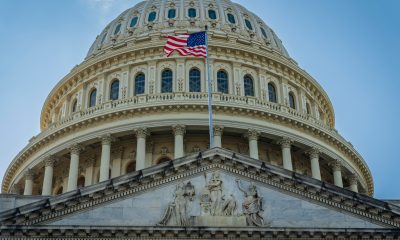Breaking
Another Ebola Problem: Finding its natural source
A scary problem lurks beyond the frenzied efforts to keep people from spreading Ebola: No one knows exactly where the virus comes from or how to stop it from seeding new outbreaks.
Ebola has caused two dozen outbreaks in Africa since it first emerged in 1976. It is coming from somewhere – probably bats – but experts agree they need to pinpoint its origins in nature.
That has had to wait until they can tame the current outbreak, which has claimed more than 1,100 lives in four countries – the worst toll from Ebola in history.
“First and foremost get the outbreak under control. Once that piece is resolved, then go back and find what the source is,” said Jonathan Towner, a scientist who helped find the bat source of another Ebola-like disease called Marburg. Towner works for the U.S. Centers for Disease Control and Prevention.
Others say finding Ebola’s origins is more than a down-the-road scientific curiosity.
“Confirming the source would definitely be important,” said Dr. Richard Wenzel, a Virginia Commonwealth University scientist who formerly led the International Society for Infectious Diseases.
Throughout history, some of the biggest wins against infectious diseases have involved not just limiting person-to-person spread but also finding and controlling the sources in nature fueling new cases.
Plague was halted after the germ was tied to rat-riding fleas. With the respiratory disease SARS, civet cats played a role. With typhus it was lice, and with bird flu, live poultry markets. Efforts to control MERS, a virus causing sporadic outbreaks in the Middle East, include exploring the role of camels.
In the case of Ebola, health experts think the initial cases in each outbreak get it from eating or handling infected animals. They think the virus may come from certain bats, and in parts of Africa, bats are considered a delicacy.
But bats may not be the whole story or the creature that spread it to humans.
The World Health Organization lists chimpanzees, gorillas, monkeys, forest antelope and porcupines as possibly playing a role. Even pig farms may amplify infection because of fruit bats on the farms, the WHO says.
“It’s not clear what the animal is. It’s going to take a lot of testing,” said Dr. Robert Gaynes, an Emory University infectious disease specialist who worked for the CDC for more than 20 years.
Part of the puzzle is how long the virus has been in West Africa. Previous outbreaks have been in the east and central regions of the continent.
The current outbreak began in rural Guinea, and the first suspected first case was a 2-year-old child who died in Gueckedou prefecture in December, researchers wrote in the New England Journal of Medicine in April. They did not speculate on how the child may have become infected.
Some scientists think the virus has been lurking in the area for years. They point to the case of a lone scientist who got sick in 1994 after doing an autopsy on a wild chimpanzee in Ivory Coast and to a recent study that explored the possibility that past Ebola cases in the region have gone undiagnosed.
Scientists in the United States and Sierra Leone looked back at hundreds of blood samples that were sent to a testing laboratory in eastern Sierra Leone from 2006 through 2008. The samples initially were checked only for Lassa fever, which is common in West Africa. But when the scientists recently went back and tested for other infections, they found nearly 9 percent was Ebola.
One or more types of Ebola virus have “probably been there in the mix” for some time but for some reason didn’t explode into a widespread epidemic in West Africa until this year, said Stephen Morse, a Columbia University infectious disease expert.
Ebola’s jump from animals to people is thought to be rare. Experts say there may be a large degree of bad luck in becoming infected – in a cave associated with a Marburg outbreak, Towner found the virus in only 3 percent of bats he tested. Even if an animal source is clearly identified and people are warned, “there is always likely to be an occasional exposure – someone who drives off the highway, in essence,” Morse said.
But with other diseases, control measures have paid off.
In 2003, when civet cats were tied to SARS, “you could just see the potential for animal-to-human spread” in live animal markets where they were sold and butchered for food, and control of those markets in southern China helped limit the outbreak, said Dr. Jeffrey Koplan, an Emory University professor and former head of the CDC.
“If you can eliminate the market either by providing substitute protein sources” or outlawing the sale of that meat, “you can have an impact,” Koplan said.
That’s tough unless you can provide other food, Towner said.
“It can be a hard sell” to convince people trying to feed families to stay away from something possibly dangerous, he said.






















